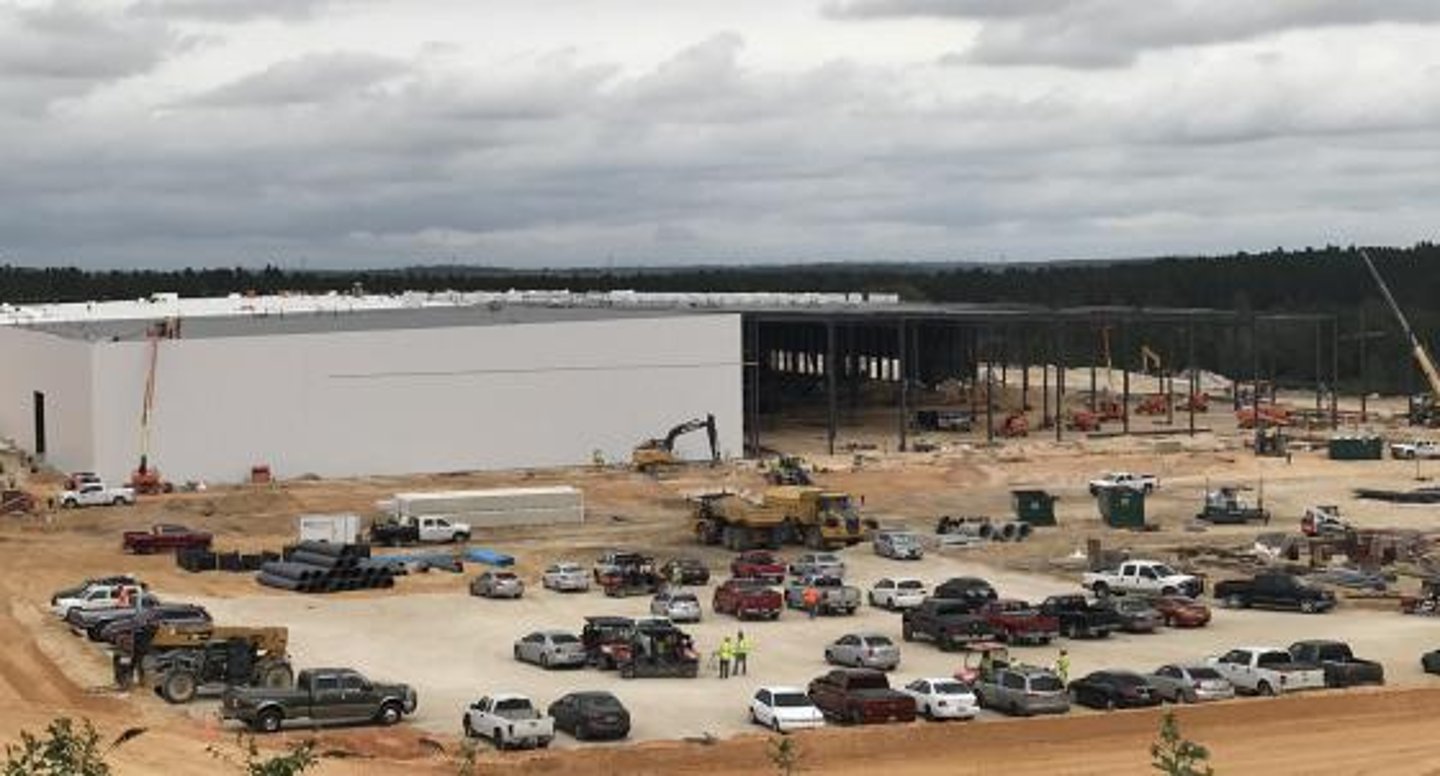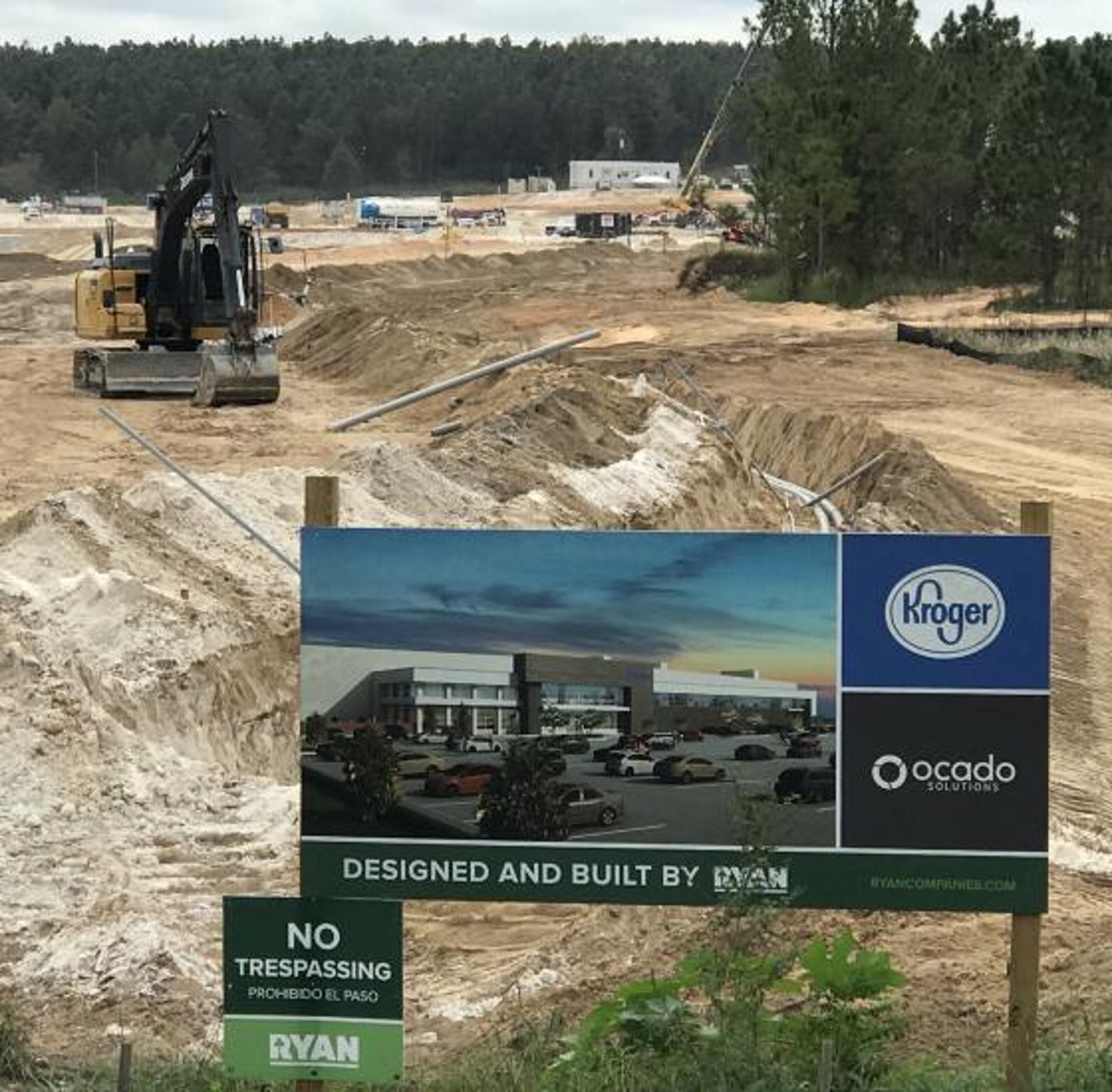Kroger CFC taking shape in Orlando
The Kroger Co.’s efforts to serve tomorrow’s food shoppers requires a new type of supply chain and automation infrastructure — one that is taking shape outside of Orlando.
The network of highly automated grocery fulfillment centers Kroger is building in partnership with U.K. online grocery leader Ocado won’t have an impact on Kroger’s business in 2020, according to Kroger’s Chief Financial Officer Gary Millerchip. However, when he and other top executives met with investors in early November, they shared a strategic vision that ensures Kroger is well-positioned for the next decade to serve shoppers however they choose. It’s a vision that will require never-before-seen levels of supply chain efficiency and a highly automated and flexible fulfillment infrastructure to cost-effectively satisfy shoppers’ shifting expectations.
At the core of the company’s approach is the Ocado partnership. A deal announced in May 2018 called for the construction of 20 highly automated grocery fulfillment centers. Eighteen months later, five locations have been identified and two are under construction. Kroger broke ground on the first location in June in the Cincinnati suburb of Monroe and then it broke ground in July in the far western Orlando suburb of Groveland. Additional locations have been identified in the Dallas and Atlanta markets and the general mid-Atlantic area.
Although the facility near Kroger’s hometown of Cincinnati began construction sooner, the facility near Orlando could come online sooner as it will be less prone to winter weather-related construction delays.
Kroger, which offers one of the nation’s most extensive private brands programs, hasn’t shared specific opening date targets other than to identify 2021 as the year the first of the facilities will open. That’s why Millerchip said they won’t have a material impact on sales next year, but beyond that it could be a different story. The reason why has everything to do with the pace of change occurring in food retailing. Shoppers have embraced the click-and-collect model far more rapidly that retailers imagined, which is why retailers such as Kroger and Walmart have expanded the service at a breakneck pace. With shopper receptiveness to digital innovation limited mainly by retailers’ imagination, Kroger’s new facilities will be coming online about the time expectations for speed, accuracy, assortment and freshness are hitting new highs.
Kroger’s new facilities are designed to deliver on all those fronts in a way that can’t be matched by the retailer’s current physical store network, which are being used for a purpose (fulfilling digital orders) that was never intended.
The new customer fulfillment centers (CFCs) will also give Kroger a way to serve shoppers in markets where it doesn’t operate retail stores. That’s the case with Groveland facility, where it appears rapid progress is being made on a 336,000-square-foot facility that gives Kroger the ability to initially serve the central part of the state. Other than its new CFC, Kroger has no physical presence in Florida.
Once the shell of the building is complete, the hard work begins. Costing upward of $50 million apiece, the CFCs will be filled with 1,000 robotic order pickers, elaborate racking and storage systems and various climate zones. Sophisticated technology ties it all together so the behind-the-scenes magic of the fulfillment process isn’t evident to a shopper placing an order with a few smart phone taps or perhaps talking to Google.
Getting the CFCs right, filled with merchandise and functioning flawlessly is no small feat. However, as Kroger executives noted during the investor conference, Ocado has been at it for 20 years. It’s why Kroger is confident when the CFCs become operational the reliability of the experience provided to the shopper will be a huge differentiator.
Mike Troy is editorial director for EnsembleIQ's Grocery Group.




